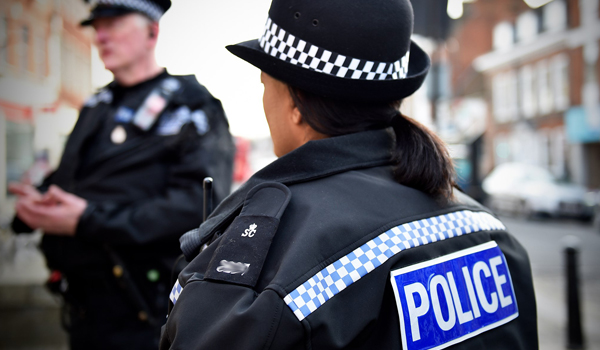‘Trailblazing’ two-way messaging service between victims and officers launched across two forces
A ground-breaking new way for victims of crime to speak directly to the police officer handling their case has been successfully launched across Hampshire and the Isle of Wight Constabulary and Thames Valley Police.
The Victim’s Portal will enable people who have reported a crime to check the status of the investigation, get updated as their case progresses, and message the officer in charge of their case (OIC), all through a link on their phone or computer.
Thames Valley Police and Hampshire and Isle of Wight Constabulary are the first forces in the UK to offer victims this service.
After someone reports a crime to 101 or 999, or via the force website, they receive a link to use the portal to check the status of the investigation. They can also find the name and collar number of the OIC handling their case and their crime reference number.
To request an update, the victim can choose to use the new two-way messaging function to contact their OIC directly.
“This is a completely new option for communication between frontline officers and victims of crime,” the forces said.
Those who do not have access to the technology will still be able to contact their local force in the usual ways.
The Victim’s Portal enables victims to access key information in one place such as their crime report, victim rights and the support services that are available to them.
In Thames Valley, 4,716 victims have logged on 18,475 times since it launched on September 19, 2023, while in Hampshire and the Isle of Wight, 4,527 users logged into the portal 18,462 times since it launched in August last year.
The two-way messaging function has been live across both forces since February 7, and already more than 800 messages have been passed between victims and police across both forces.
“Currently, the portal is not available for all crime types but as this is a new system we are trialling this service using around 50 per cent of our crime types that meet certain risk criteria,” the forces said.
Chief Superintendent Simon Dodds, head of Contact Management for Hampshire and Isle of Wight Constabulary and Thames Valley Police, said: “This is a trailblazing piece of new technology, putting victims at the heart of what we do, which is a priority for us.
“We know that being a victim of crime can be a really traumatic time, so we are trying to make this process as easy as possible for our victims.
“Feedback from victims so far has been very positive, with many saying how easy the portal is to use, and that they are pleased to have that personal contact method.
“Instead of going through our 101 call handlers to request contact, victims now have a direct line of communication to the heart of their investigation.
“This will increase support for those who need it most, while dramatically reducing the demand on our 101 and 999 service.”
He added: “We understand though that some people prefer to use the more traditional ways to speak to us, so we don’t want those people to worry, those methods will not stop, this just provides another option for those people who would prefer to contact us using the latest technology because it is more convenient for them.”
Hampshire and Isle of Wight police and crime commissioner (PCC) Donna Jones added: “I am thrilled to welcome the launch of the force’s new Victims Portal. It marks a significant milestone in the constabulary’s commitment to providing victims with the support and care they deserve.
“Since becoming commissioner in 2021, the public told me unreservedly they wanted feedback on their crime reports and for the 101 service to be more effective.
“Now, with the new Victim’s Portal, victims won’t feel they need to call 101 to chase updates on their case, which will free up the phone lines for people to report crime. The 101 waiting time has already significantly reduced over the last six months.
“The portal is crucial part of my all-encompassing Victim Care Hub, which places victims at the forefront of investigations and ensures they are offered emotional and practical support to help guide them through the criminal justice process.”
Thames Valley PCC Matthew Barber said: “Improving the communication between the police and the public is a key priority. It is a focus in my recent Crimefighters Strategy and the public need to know they can get hold of the police when they need help.
“I am excited to see the results of this trial. This technology will not only support victims of crime to have that two way personal communication with an officer about their case, but it will have a much wider impact on the contact between the public and the police.
“Around 20 per cent of calls to 101 are for updates to crimes already reported. By introducing new digital ways for victims to get timely information and updates from frontline officers, the force will be able to reduce the demand on 101 and improve the experience and waiting times for people making that initial call for help or to make a report.”


